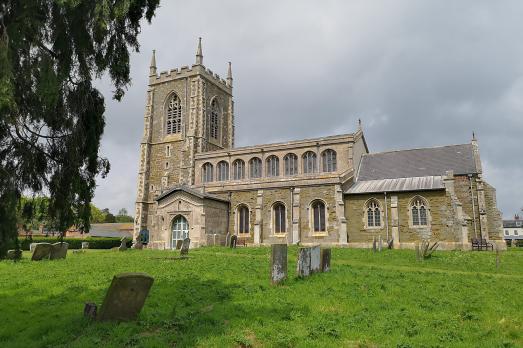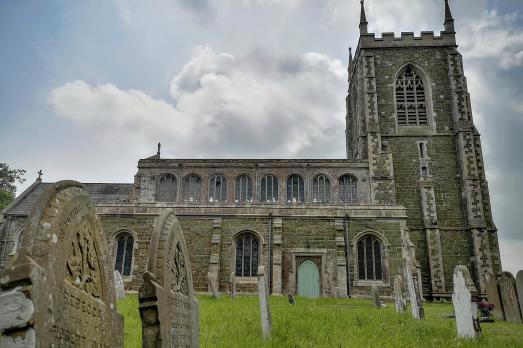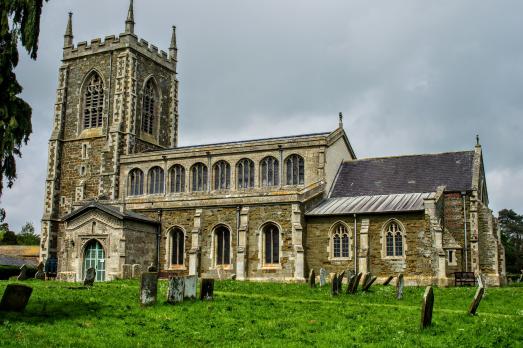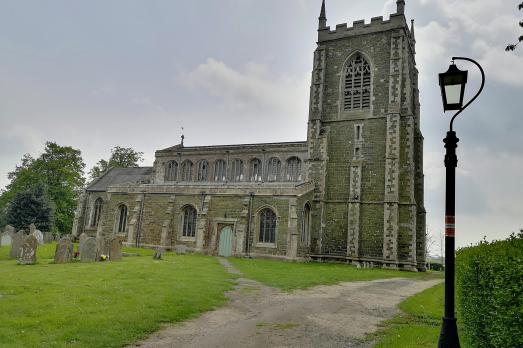It is not known when a church was first built on this site, but records go back as far as William the Conqueror. A mention of a church is also made in the Domesday book.
There are many richly carved items within the church including a pulpit, reading chairs and oak lectern. Many of the pews are decorated with 15th century carved poppyhead bench heads, depicting animals, birds, flora and fauna. Also a unique wooden screen is carved with the names of former rectors, churchwardens and parish clerks, the earliest dating from 1224.
In 1846 the nave roof was destroyed by a storm and was replaced with the current splendid roof, boasting the carved bosses and ten wooden angel figures.
The stone font located at the back of the nave is very old, and some have thought it might have been here in the earlier church.
In the south aisle there is a stone effigy of a recumbent knight, and it is thought to represent Henry de Halton and is dated around 1350. Alongside is an ancient burial slab and the writings, when translated, read 'Here lies Sir Walter de Bec on whose soul may God have mercy', probably dated around 1250. It is thought this slab is the oldest of any kind in the neighbourhood.






